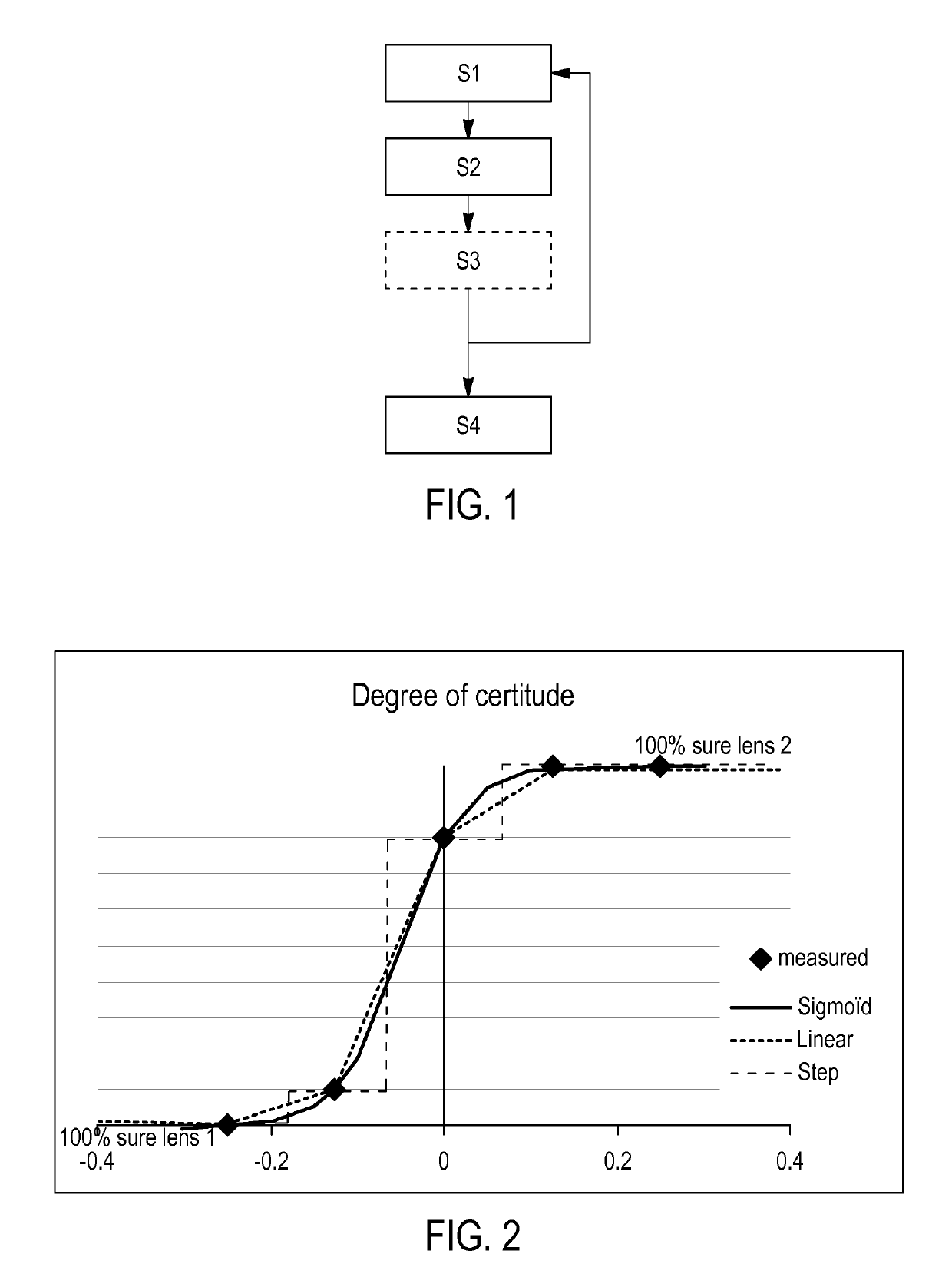Method for determining a dioptric parameter of an ophthalmic lens to be provided to a person
a technology of ophthalmic lenses and dioptric parameters, which is applied in the field of determining the dioptric parameters of ophthalmic lenses to be provided to a person, can solve the problems of inconvenient or long methods, inability to meet the needs of qualified personnel, and inability to carry out complex and time-consuming measurements, etc., to achieve the effect of improving the measurement of the dioptric parameters of a person, reducing the risk of eye damage, and improving the accuracy of dioptric parameters
- Summary
- Abstract
- Description
- Claims
- Application Information
AI Technical Summary
Benefits of technology
Problems solved by technology
Method used
Image
Examples
examples
Starting Values
[0132]Typically, the starting values for the dioptric parameters are derived from an objective measurement, made with an autorefractometer (ex: AKR / ARK systems from Nidek or KR / RM systems from Topcon) or a retinoscopy or from habitual correction measured from the current equipment with a focimeter.
[0133]The preferred starting value is from an autorefractometer for the cylinder and axis and from a fog / defog procedure conducted by an optometrist or ECP for sphere.
[0134]The starting value for the gap between two tested values is usually 0.25D but may be derived from a preliminary measure of person sensitivity such as High Order Aberration (HOA), RMS level from an aberrometer, Blur detection threshold or a dioptric sensitivity measured with a Duochrome test or with displayed letters.
Example for Determining the Person Sensitivity to Blur
[0135]The person sits 6 meters from a screen in a room lit normally.
[0136]The person uses its usual ophthalmic correction, for example its...
PUM
 Login to View More
Login to View More Abstract
Description
Claims
Application Information
 Login to View More
Login to View More - R&D
- Intellectual Property
- Life Sciences
- Materials
- Tech Scout
- Unparalleled Data Quality
- Higher Quality Content
- 60% Fewer Hallucinations
Browse by: Latest US Patents, China's latest patents, Technical Efficacy Thesaurus, Application Domain, Technology Topic, Popular Technical Reports.
© 2025 PatSnap. All rights reserved.Legal|Privacy policy|Modern Slavery Act Transparency Statement|Sitemap|About US| Contact US: help@patsnap.com


